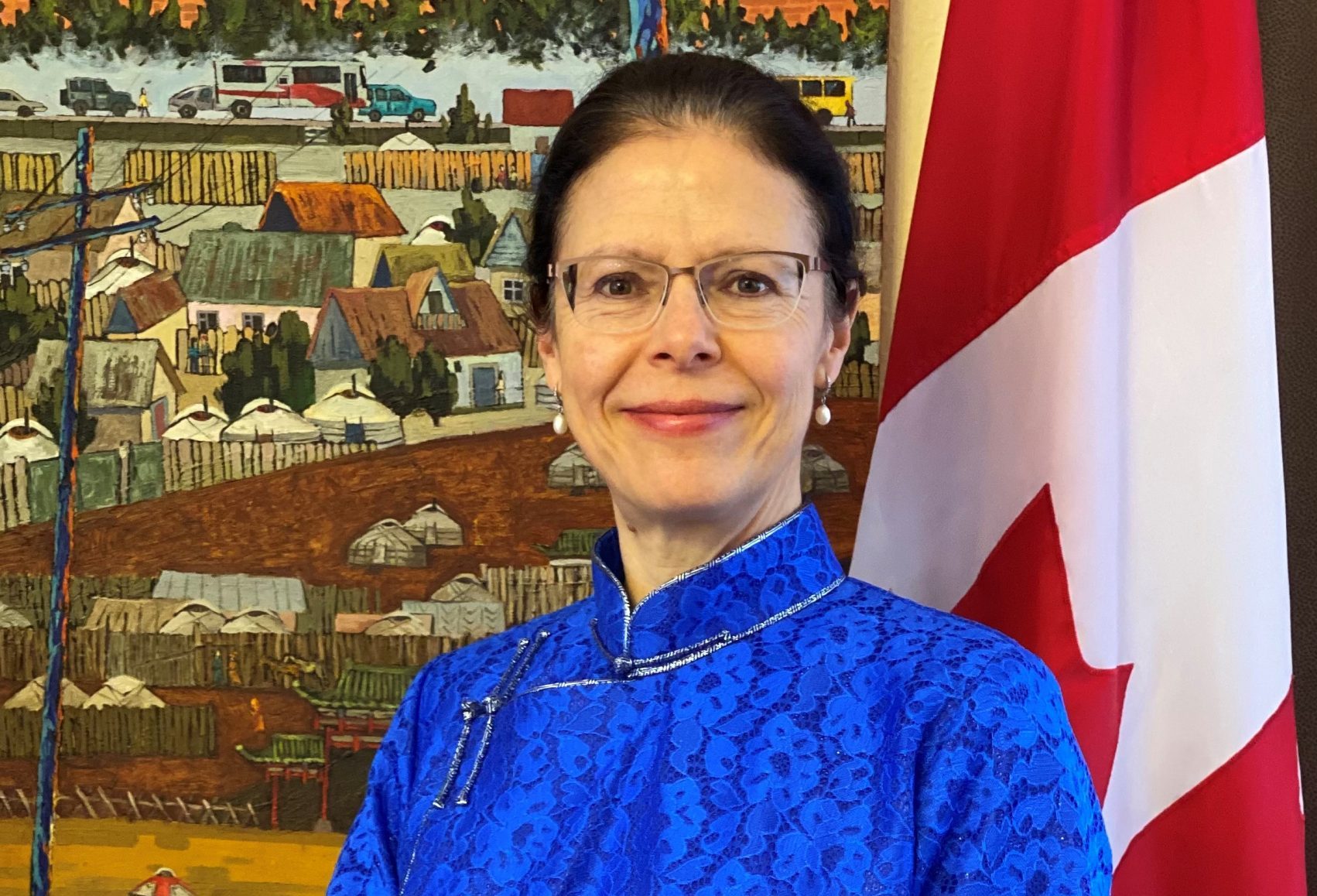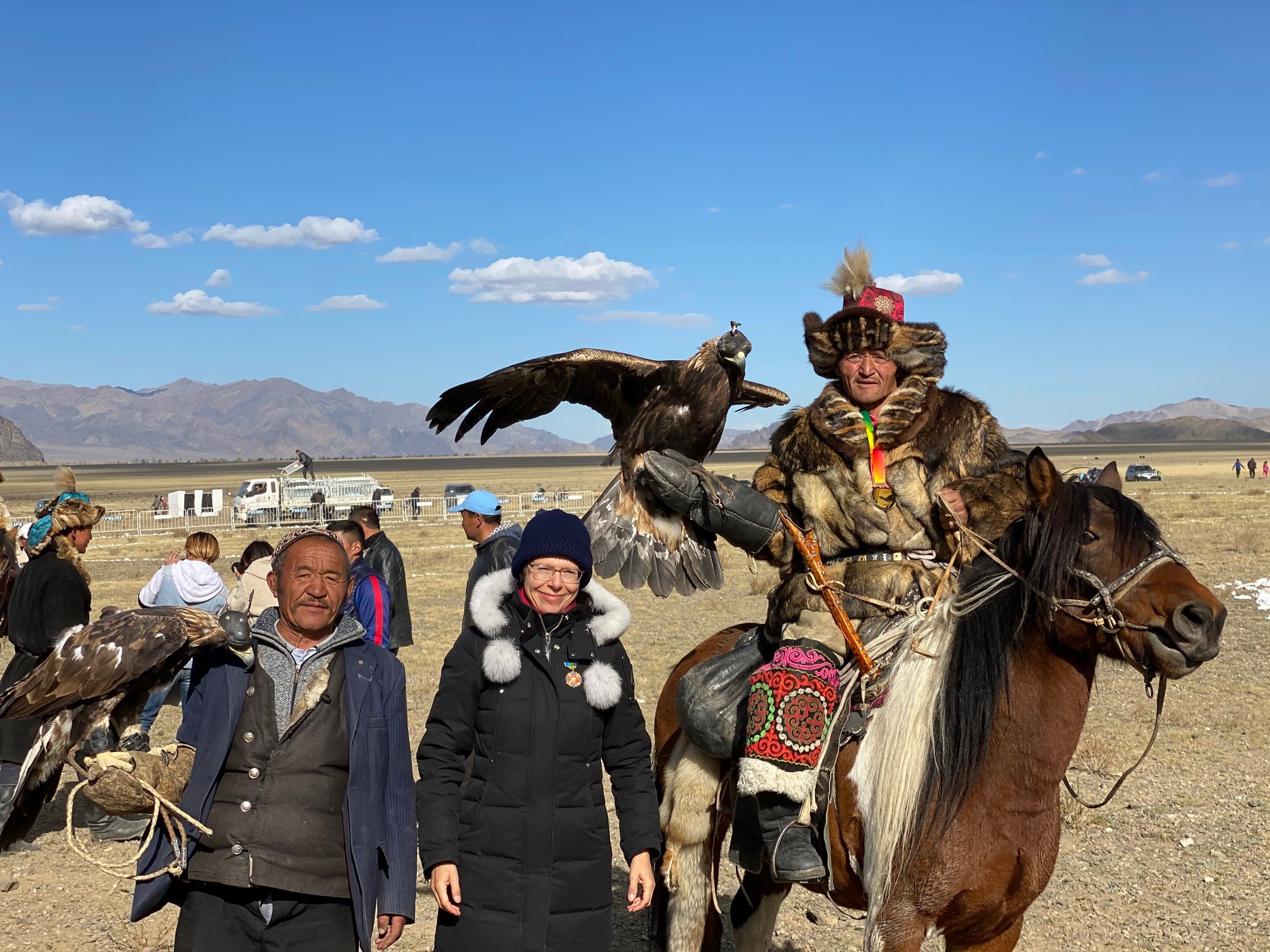Catherine Ivkoff: We will be focusing on the green economy

“Green Development” magazine spoke with Ambassador of Canada to Mongolia Catherine Ivkoff on green growth and finance.
-Thank you, Ms. Ambassador, for accepting our invitation. To begin our interview, please share with us the main goals and objectives of the green growth policies of Canada, and what have been the biggest results since Canada started pursuing green development?
-First I would like to thank you for the opportunity to discuss these important issues with you. The main green growth policy of Canada is called the “Pan-Canadian Framework on Clean Growth and Climate Change”. The main goals and objectives of this plan, and the goals and objectives of all of Canada’s green growth policies, are for Canada to meet our emissions reduction targets, grow the economy, and build resilience to a changing climate. The Government of Canada developed the Pan-Canadian Framework in 2016, in consultation with Indigenous peoples and provinces and territories, and taking into account the views of Canadians across Canada.
The Framework outlines over 50 concrete measures to reduce carbon pollution that are projected to reduce emissions by 227 million tonnes in 2030, which would be the greatest drop in emissions in Canada’s history.
The Pan-Canadian Framework has resulted in the creation of new jobs across Canada in fields including energy efficiency, electric vehicle charging infrastructure, public transit, and the development of new technologies. Since 2015, the Government of Canada has put in place transformative policies and invested $100 billion in climate action and clean growth. By focusing on green development and fostering innovation and green jobs, and by working with like-minded countries, Canada is building a more resilient, sustainable, and competitive economy.
-Another important topic we should consider is green finance which lately has become the main agenda at the international level. How is Canada managing its green funding portfolio?
Canada’s increased commitment to climate finance recognizes that urgent action is needed to address the interconnected crises of climate change and biodiversity loss, which disproportionately affect the poorest and most vulnerable. Funding will support developing countries in cutting pollution and building climate resilience.
At the G7 Leaders’ Summit in 2021, Canada doubled its previous commitment to international climate finance, pledging $5.3 billion over five years. This commitment will be carried out between 2021 and 2026 and includes increased funds for adaptation and biodiversity co-benefits. Canada is the eighth largest donor to the Green Climate Fund (GCF), an operating entity of the financial mechanism of the United Nations Framework Convention on Climate Change (UNFCCC) and one of the principal mechanisms for developed countries to deliver on international donors’ Paris Agreement commitments to support mitigation and adaptation efforts in developing countries.
Canada has contributed $600 million CAD since 2015 to the GCF, including for programming focused on addressing Mongolia’s climate and clean energy goals.
By supporting the GCF, Canada is helping to promote the paradigm shift towards low-emission and climate-resilient development pathways. In addition, in Asia, Canada’s $200 million contributions to the second phase of the Canadian Climate Fund for the Private Sector in Asia support efforts to pursue a low-carbon and climate-resilient development path for the region. This includes gender-responsive activities related to water supply and management, agriculture and forestry, land use management, natural resource management, resilient infrastructure, coastal protection, disaster risk management, clean and renewable energy, sustainable transport, and waste management. Over the life of the Fund, Canada’s contribution is expected to leverage up to two times its amount in private sector investment and support up to 100,000 beneficiaries in adapting to the effects of climate change. The Fund is also expected to reduce or avoid greenhouse gas emissions of up to 18 megatons, which is the equivalent of removing about 3.5 million cars from the road for one year.

Ambassador Ivkoff visited Lake Khuvsgul during her vacation in 2020.

Ambassador Ivkoff in Khuvsgul.
-What government regulations and policies are being implemented to foster nature while actively supporting the businesses?
-In Canada, fostering nature and environmental protection go hand in hand with economic development. We recognize that in order to keep Canada’s economy strong and resilient, we must preserve our natural environment—there is a direct connection here.
Canada’s efforts in combating climate change and fostering nature at home are guided by our strengthened climate plan. “A Healthy Environment and a Healthy Economy”, is the federal plan to ensure that Canada meets and exceeds its current greenhouse gas reduction target for 2030 under the Paris Agreement.
This plan dates from 2020 and builds on the Pan-Canadian Framework on Clean Growth and Climate Change. It contains 64 strengthened and new federal policies, programs, and investments to cut pollution and build a stronger, cleaner, more resilient, and inclusive economy. “A Healthy Environment and a Healthy Economy” is the cornerstone of the Government of Canada’s objective in creating jobs, and restoring employment to pre-pandemic levels, while at the same time focussing on climate action and clean growth.
This plan has five key components. The first is cutting energy waste. This means supporting green building solutions and energy efficiency solutions for homes. This will cut pollution, create green jobs, and make life more affordable. This will also make the places in which Canadians live and gather more comfortable, and we will pay less to provide power to these buildings. The second key component is making clean, affordable transportation and power available in all communities. To do this, we will expand the supply of clean electricity by investing in renewable clean energy and technology. We will also promote the use of cleaner modes of transportation, such as zero-emission vehicles and transit. This will ultimately make our cities healthier and less congested.
Third, we will continue to put a price on pollution. Canada’s approach to carbon pollution pricing has proven that it is realistic to meet the country’s economic needs and environmental goals at the same time. The price of carbon pollution will gradually rise through 2030 while providing direct subsidies to households.
The fourth action area is building Canada’s clean industrial advantage. To ensure that Canadians will have well-paying jobs for the long term, we must support Canadian companies in their innovation and their development of low-carbon products, services, technologies, and solutions that the world needs. Through policies, incentives, and investments, Canada will accelerate the work being done by companies and innovators to cut pollution and move to a cleaner economy, preserving and creating sustainable new jobs.
The fifth key component of our plan is embracing the power of nature. The government of Canada plans to plant two billion trees and better manage, conserve, and restore our natural spaces. This will cut pollution, make communities more resilient to extreme weather events, and create thousands of jobs for biologists, urban planners, nursery growers, tree planters and technicians. This is a priority we share in common with Mongolia and President Khurelsukh’s initiative to plant one billion trees in Mongolia.
In addition, the Government of Canada also tabled legislation enshrining a net-zero emissions target for 2050. Canada is taking strong action to fight climate change by making investments to accelerate our path to a 100% net-zero electricity future. Reaching net-zero emissions is what science says the world must achieve—and so that is our objective.
-Canada has very nice green cities and national parks. What do Canadians do in order to preserve beautiful nature and green spaces?
-Canada is home to 25% of the Earth’s wetlands and boreal forests and 20% of its freshwater. Canada has the longest coastline in the world, taking into account our coasts on the Atlantic, Pacific, and Arctic Oceans. Canada is also home to precious habitats for birds, fish, and mammals. In this regard, Canada has a special responsibility to preserve these precious natural resources. More than 2 million square kilometers of Canada’s lands and oceans are already protected or conserved, but we are not stopping there. The Government of Canada is committed to conserving a quarter of Canada’s lands and freshwater (totaling almost 2.5 million square kilometers) and a quarter of Canada’s oceans (1.44 million square kilometers) by 2025, and to working toward conserving 30% of each by 2030. In total, that would be almost 4 million square kilometers of protected lands, lakes, and oceans in Canada – an area 2.5 times the size of the whole country of Mongolia. Parks Canada plays a key role in our conservation efforts. Parks Canada is the oldest national parks service in the world. We recognize that the parks and protected areas in Canada are an important, nature-based component of the solution to climate change because they foster healthy ecosystems.
Parks Canada works with Indigenous communities across Canada as key partners in conserving nature. For more than 110 years, Parks Canada has administered a system of national parks, historic sites, and marine conservation areas which now comprises 171 national historic sites, 47 national parks, and five national marine conservation areas.
Now, Parks Canada will also be the steward of a new national urban parks program. There is a growing recognition of the importance of urban parks as essential places for conservation, recreation, learning, and mental and physical well-being. This is particularly important given that over 70% of Canadians live in urban centers. The Government of Canada is investing $130 million, through the National Urban Parks Program, to work with partners to create a network of national urban parks that will expand access, while protecting nature, in our urban centers.
Parks Canada will work with a wide variety of stakeholders including municipalities, provinces, Indigenous partners, and conservation organizations, to identify opportunities to create or enlarge national urban parks in urban and near-urban environments across Canada. Expanding access to and protection of nature in urban centers brings significant results. Nature acts as a buffer against extreme weather events, nature absorbs and traps carbon dioxide, protects against flooding, and can prevent the loss of biodiversity.

Ambassador Ivkoff in Bayan-Ulgii during the “Eagle Festival” in 2020.
-Canada is a world leader in green growth. How does Canada share its green growth experience with other countries?
-Canada has a long history of working internationally to tackle global challenges. Through Canada’s leadership in the G7/G20, the United Nations, multilateral development banks, and other fora, Canada has consistently pushed for increased global ambition in addressing climate change and environmental issues. We have shared our green growth experience with other countries in many ways. Here, I will give specific examples in three areas: some highlights of Canada’s multilateral work, our international development assistance work in climate-smart agriculture (CSA), and our expertise in clean technologies.
Canada’s multilateral work has led to inclusive free trade agreements that ensure that high environmental standards are maintained as trade is liberalized, and that support the trade of climate-friendly goods and services. Examples of such trade agreements include Canada-European Union Comprehensive Economic and Trade Agreement (CETA), Comprehensive and Progressive Agreement for Trans-Pacific Partnership (CPTPP), and Canada-United States-Mexico Agreement (CUSMA).
In 2017, Canada co-founded the Powering Past Coal Alliance (PPCA) with the United Kingdom. Three years after its launch, the PPCA has positioned itself as a driving force behind the global phase-out of coal-fired electricity and the United Nations Secretary General’s call for no new coal after 2020. It has grown to over 110 members, including both national and sub-national jurisdictions and an increasing number of private sector actors, as well as strategic partnerships with leading philanthropic organizations. The PPCA is driving the global market shift towards clean and sustainable energy.
Agriculture is one of the most vulnerable sectors to climate change but is also a major source of global greenhouse gas (GHG) emissions. Climate-smart agriculture (CSA) is an agricultural model that addresses the interlinked challenges of agricultural growth, food security, and climate change through a triple-win synergy of sustainable production, climate change adaptation, and climate change mitigation.
Since its inception at the 2010 Hague Conference on Agriculture, Food Security, and Climate Change, CSA has become the principal model of agriculture for working at the nexus of climate change, economic growth, and agriculture. It is a model of agriculture that seeks to optimize the following three objectives simultaneously: sustainably increasing agricultural productivity and incomes; adapting and building resilience to climate change, and reducing and/or removing greenhouse gases emissions.
Canada’s international development assistance supports poor and vulnerable farmers, especially women farmers, to adopt CSA tools and technologies to improve natural resource management, agricultural production, and market access.
COVID-19 has propelled a green recovery, with economic recovery programs across the world highlighting new ambitious climate targets and the need to stimulate economic growth through investments, regulatory frameworks, and policies supporting clean technologies and their adoption. Canada has numerous strengths in the cleantech sector. Canada’s leading clean technologies include solutions in renewable energy, water and wastewater, energy storage, energy efficiency, smart grid, hydrogen, carbon capture, utilization and storage (CCUS), climate-smart agriculture, and waste-to-value. These sub-sectors are important areas for building collaboration with partner countries. In that regard, many of the initiatives being organized by the Embassy of Canada in Mongolia will be focusing on the green economy.
-Thank you so much for giving this interview. All the best to you.
-Thank you for this opportunity. I hope that this discussion about Canada’s actions and initiatives related to green development will be of interest to your readers.